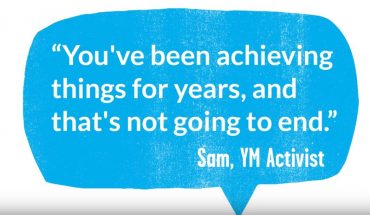Attention-Deficit Hyperactivity Disorder is not a defined illness. Rather it is a collection of symptoms and behaviours characterised by inappropriate degrees of inattention, impulsivity and/or hyperactivity. Children with Attention-Deficit/Hyperactivity Disorder are typically impulsive, forgetful, restless to the point of disruption, prone to fail, unable to follow through on tasks, unpredictable and moody.
These characteristics are relatively chronic in nature, and are not due to other physical, mental or emotional causes.
A child who suffers from this condition shows disruptive behaviours which cannot be explained by any other psychiatric condition and are not in keeping with those of the same-aged people with similar intelligence and development. Children with ADHD have difficulty focussing their attention to complete a specific task. Additionally, they can be hyperactive and impulsive and can suffer from mood swings and “social clumsiness.
The diagnosis must be based on a number of observations. Typically, parents and teachers complete questionnaires, children are observed at home and at school, psychological tests are administered, and a clinical interview of the child and the family is conducted.
One assessment tool is the use of behavioural rating scales in the identification of ADHD. The Conners Teacher’s Rating Scale (CTRS), developed in 1969, has been used extensively since its publication (Grumpel, Wilson, & Shalev, 1998). This instrument (CTRS) is important because of its wide acceptance.
Although our understanding of ADHD has changed over the years, the preference for the scale has continued stable (Grumpel, et al., 1998). The CTRS uses a 4-point scale. It includes the following ratings: Not at all present, Just a little present, Pretty much present, and Very much present. There are 28 items in the scale èwith several questions that collect demographic information from the respondent’ (Grumpel, et al., 1998). Both the child’s teacher and a parent complete the scale. A discrepancy score should be determined from the two completed questionnaires and a determination made as to whether the child is exhibiting symptoms proportionate with ADHD.
Another rating scale used widely is the Conners Abbreviated Symptoms Questionnaire (ASQ). It is often referred to as the Hyperactivity Index. This 10-item scale is used for screening purposes to identify hyperactive children.
ADHD affects both children and adults and symptoms include high levels of inattentiveness, impulsiveness and restless activity.Adults suffering from severe ADHD show signs of depression when inactive, a lack of concentration, poor time management and difficulty sustaining relationships. ADHD also caused other problems such as alcohol and drug misuse, anxiety disorders and learning difficulties.
Some symptoms of adult ADHD are similar to those of bipolar disorder, but ADHD tends to show a persisting trait of irritability and volatility, very different from the grandiose and euphoric symptoms of mania and the depression found in bipolar disorder.
ADHD develops in childhood and is most commonly noticed at the age of five. As many as 15 per cent to 65 per cent of children diagnosed with ADHD still have symptoms of the disorder in adulthood.
It is thought to affect three to seven per cent of school age children. Research suggests that 80 per cent of children diagnosed with ADHD continue to experience symptoms during adolescence and 67 per cent continue to have symptoms into adulthood. ADHD has multiple causes. However the evidence so far shows that it is not caused by poor parenting, rather, it is caused by a complicated combination of factors. These factors include changes in those parts of the brain which control impulses and concentration (neurobiological factors) and genetic, inherited and environmental factors.
ADHD has a significant genetic component: most differences in severity of symptoms are due to genetic factors. For example, if a family has one ADHD child, there is a 30-40 per cent chance that another brother/sister will also have the condition and a 45 per cent chance (or greater) that at least one parent has the condition. If the child with ADHD has an identical twin, the likelihood that the twin will also have the disorder is about 90 per cent.
Other research has suggested that in a small percentage of cases, ADHD can be due to injury (during development) to specific regions of the brain. For example, use of alcohol or tobacco during pregnancy, premature delivery with associated minor brain bleeding or accidental head injury after birth, could all cause ADHD-like symptoms. ADHD is not associated with purely social factors such as poor parenting (child management), family stress, divorce, excessive TV viewing or video game playing, or diet, although some of these factors can exacerbate a pre-existing condition.
When ADHD is left unidentified or untreated a child is at great risk for:
- impaired learning ability
- decreased self-esteem
- social problems
- family difficulties
- potential long-term effects
Most experts agree that the most effective way to treat ADHD is with several complimentary approaches. An effective treatment plan will involve a combination of treatments such as psychiatry, psychology, appropriate educational interventions, behavioural therapy and medication. Depending on the needs of the individual child, a combination of medical, teaching and behavioural support can help the child to reach his/her full potential and live as normal a life as possible, having meaningful relationships and reducing family stress.
- Gut microbiome could delay onset of type 1 diabetes - 3rd April 2025
- The da Vinci 5 Robot Is Set To Transform Bariatric Care: - 31st March 2025
- Beyond money: the hidden drivers fuelling child food insecurity - 31st March 2025






